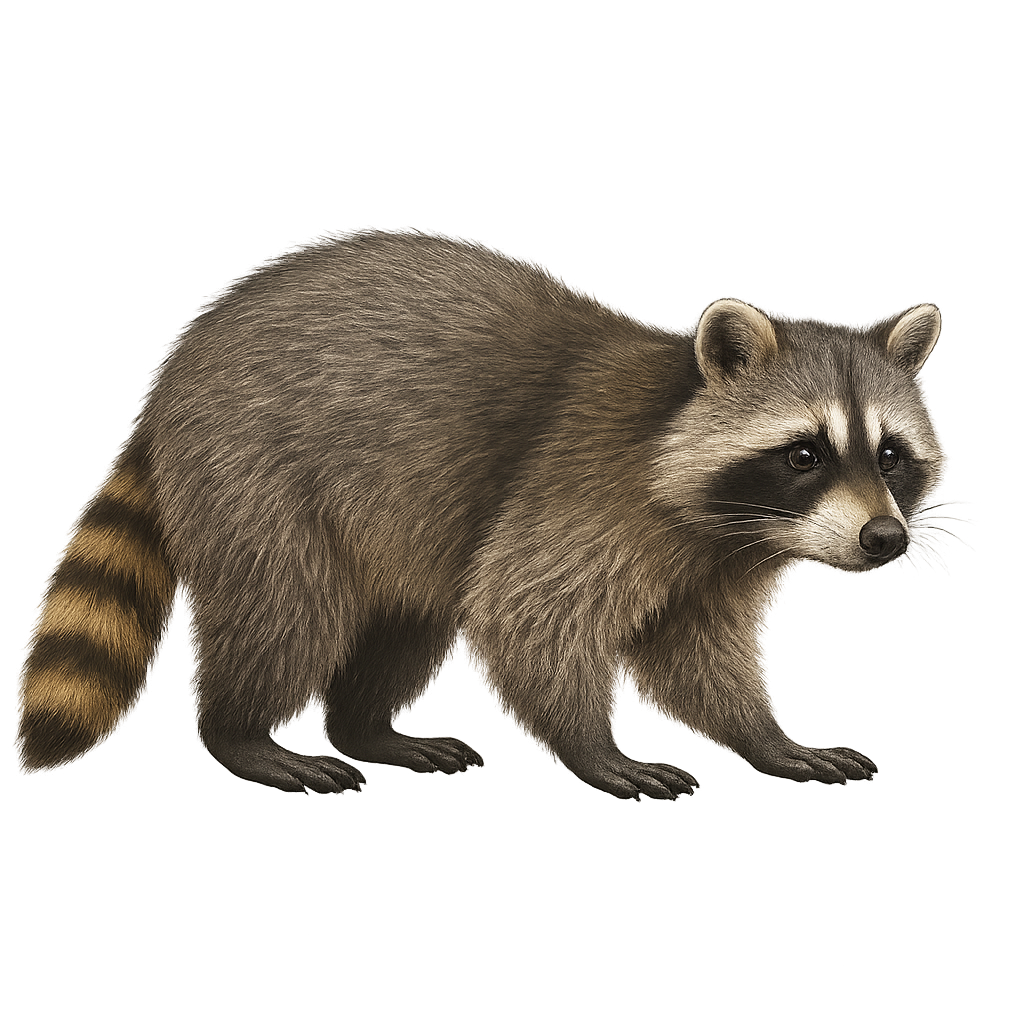Your wildlife photography guide.
Explore the northern raccoon in detail, study its behavior, prepare your shots.
Where to observe and photograph the northern raccoon in the wild
Learn where and when to spot the northern raccoon in the wild, how to identify the species based on distinctive features, and what natural environments it inhabits. The WildlifePhotographer app offers tailored photography tips that reflect the northern raccoon’s behavior, helping you capture better wildlife images. Explore the full species profile for key information including description, habitat, active periods, and approach techniques.
Northern Raccoon
Scientific name: Procyon lotor

IUCN Status: Least Concern
Family: PROCYONIDAE
Group: Mammals
Sensitivity to human approach: Slightly shy
Minimum approach distance: 10 m
Rut period: January to March
Gestation: 63-65 jours
Births: March to June
Habitat:
Mixed forests, wetlands, and anthropogenic environments
Activity period :
Mainly active at night, generally discreet during the day.
Identification and description:
The Raccoon is a small omnivorous mammal native to North America, but it has now spread widely to other regions of the world, including Europe and Asia. It measures about 40 to 70 cm in length, with a tail of 20 to 40 cm, and weighs between 4 and 10 kg. Its fur is primarily gray, with a distinctive black mask around the eyes, giving it a unique appearance. The Raccoon is an excellent climber and feeds on fruits, nuts, small animals, insects, as well as food scraps when it lives near human settlements. It is known for its curious behavior and its habit of "washing" its food, although this gesture is actually a reaction to the sensation of moisture in its paws. While its population is widespread, this species can sometimes be seen as a pest, especially due to its tendency to rummage through trash and cause damage to homes.
Recommended lens:
400 mm – adjust based on distance, desired framing (portrait or habitat), and approach conditions.
Photography tips:
Approach slowly and discreetly, using a telephoto lens to avoid disturbing the raccoon, a curious animal that can flee quickly if disturbed.
Photograph early in the morning or late in the afternoon, when the light is soft and the raccoon is more active, often foraging for food in wooded areas or along streams.
Capture moments of rummaging: Raccoons are known for their rummaging behavior, often seen manipulating objects or searching for food in the water.
Be patient: The raccoon is nocturnal, so be prepared to photograph during dusk or early evening.
The Raccoon is a species of minor concern, but it is important to respect its natural space and avoid disturbing its feeding habits or environment. Follow local conservation rules to minimize the impact of your presence and preserve its natural habitat.
The WildlifePhotographer App is coming soon!
Be the first to explore the best nature spots, track rutting seasons, log your observations, and observe more wildlife.
Already 1 429 wildlife lovers subscribed worldwide

